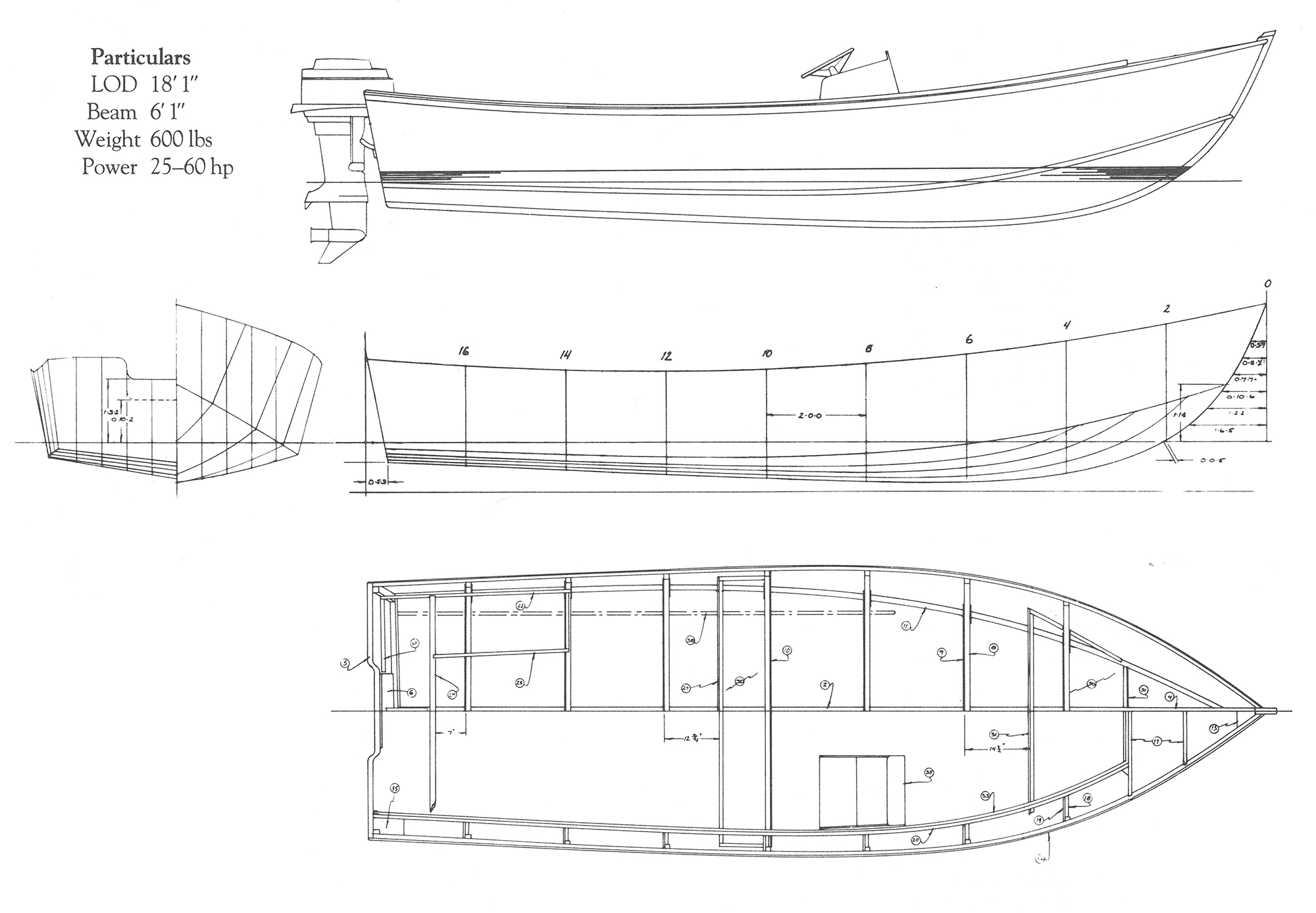
Simple, able, and efficient, this competent outboard boat will carry a substantial payload through choppy waters.
Working on the coast of Maine in 1985, Bob Stephens drew his Design No. 1 for the Williams College-Mystic Seaport Maritime Studies Program. The commission stipulated that the boat must carry seven adults, or fewer crew and considerable cargo, it should be propelled easily by a motor of moderate size, and it should be trailerable.
The young designer responded with this plywood launch. Considerable deadrise (“V” to the bottom) forward – considerable, at least, for a sheet-plywood hull – and a relatively high bow, reportedly result in good windward performance even in dirty weather. Back aft, the deadrise diminishes, giving the boat greater initial static stability than most of its deep V counterparts. In an effort to gain volume (for carrying large loads) and to spread out the displacement, Stephens drew the chines well forward before sweeping them upward to meet the stem.
The working drawings call for straight forward, traditional plywood construction. That is, you’ll have to make and bevel seven frames, real chine logs, sheer clamps, knees, all that good stuff. Some builders might prefer to see greater use of longitudinals, the elimination of some transverse frames, and, perhaps, stitch-and-glue construction. As may be, following the plans as drawn results in a stiff, relatively light ( 600 lbs) hull.
Good sheet-plywood outboard boats – really good ones- are hard to find. But they are out there if you look, Calkins’ Bartender, Dunbar’s Bristol Bluefish, Bolger’s Diablo, and others. By all reports, Stephens’ 18-footer can run in their company. Not bad for Design No. 1.
-Mike O’Brien
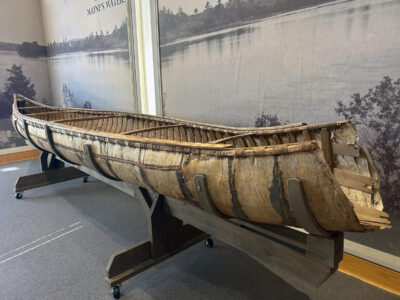
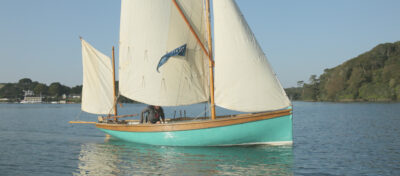
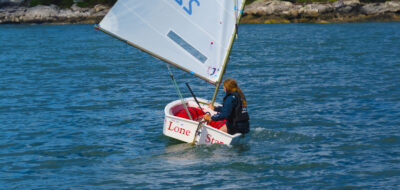
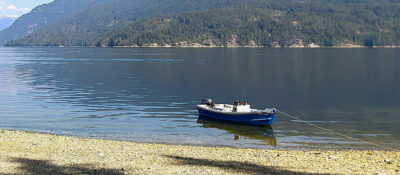
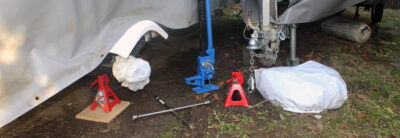
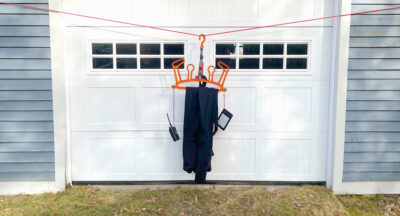
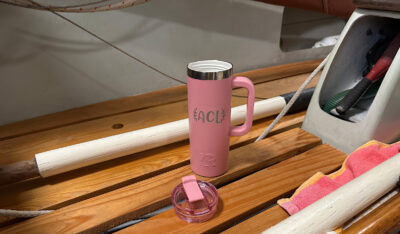
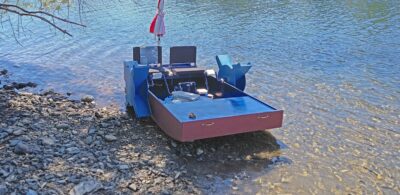
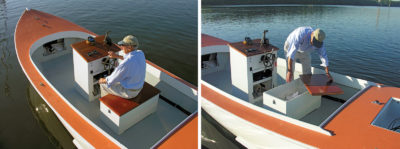
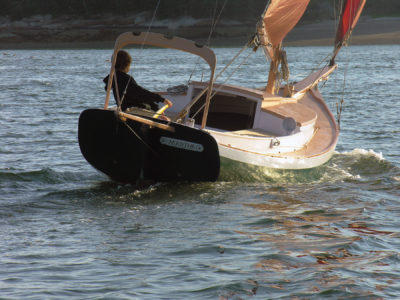
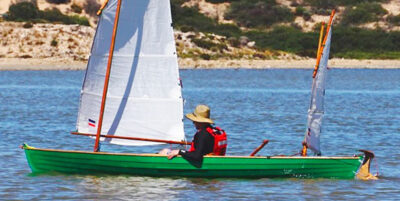
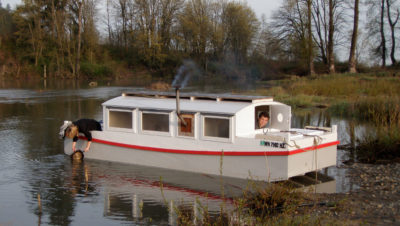
She appears to be a nice looking boat. Are there any examples of her having been built somewhere? As well, there is a small amount of rocker – would this cause the boat’s nose to stick into the air?
Thanks,
Derrick